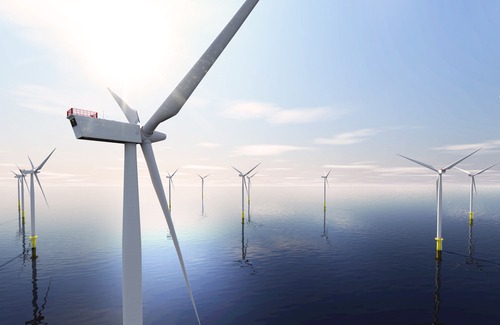Federal government accelerates U.S. floating offshore wind deployment

On Tuesday, the U.S. Department of Energy (US DOE) announced investments in floating offshore wind transmission planning, research, and technology.
The announcements are part of the Biden-Harris Administration’s Floating Offshore Wind Shot Summit, driven by the U.S. Departments of Energy, Interior, Commerce, and Transportation. The new actions support the administration’s Wind Shot goals to reduce the cost of floating offshore wind energy by more than 70 percent by 2035 and to deploy 15 gigawatts of floating offshore wind by 2035. The departments said the actions would help to position the United States as a world leader in floating offshore wind technology while creating good-paying jobs, lowering energy costs, and strengthening U.S. energy security.
“Floating offshore wind offers untapped opportunities for us to produce clean, reliable, and affordable power for millions,” U.S. Energy Secretary Jennifer M. Granholm said. “President Biden wants America to become a global leader of offshore wind technology and deployment, and with his historic climate investments, DOE is capturing this potential to spur private investment, boost the domestic supply chain, and deliver on our bold clean energy goals.”
Other new efforts by the DOE include launching a new West Coast Offshore Wind Transmission Study that will analyze and examine how the country can expand transmission to harness power from floating offshore wind for West Coast communities. The 20-month study will develop practical plans through 2050 to address transmission constraints and evaluate multiple pathways to reach offshore wind goals while supporting grid reliability, resilience, and ocean co-use.
Additionally, the DOE will fund the expansion of the National Offshore Wind Research and Development Consortium to include California. Once it receives final approval, California and the Consortium will collaborate to fund research and development projects that directly respond to critical, near-term offshore wind development priorities.
These and other initiatives support the administration’s whole-of-government approach to making America a leader in floating offshore wind technologies, the departments said, and will help the administration tackle key challenges associated with the administration’s climate goals by harnessing renewable energy potential and advancing the transition to clean energy.
